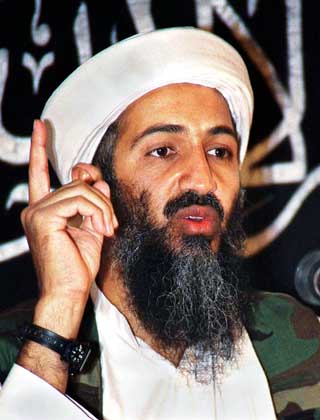What do elections in India have to do with terrorism? Plenty. These days, well-heeled candidates distribute “notes for votes”, passing out currency so as to entice electors into choosing them. While illegal in India’s absurdly restrictive electoral system (where a candidate for a parliamentary seat with more than five million voters breaks the law if he spends more than $30,000 on his election), why should counter-terrorism experts need to experience blood pressure rises at the fact that an estimated $ 800 million was handed out during the 2009 national elections in India to voters? More recently, last month more than $100 million in cash was seized from politicians in just the state of Tamil Nadu, where elections to the state legislature were due.
Most of the cash handed out by generous politicians is counterfeit. They get the currency from the same networks that operate the terror and narcotics syndicates. Apart from North Korea’s Kim Jong Il, the biggest counterfeiter in the world is Pakistan’s ISI, which uses its multiple contacts in India to circulate cash that has been printed for the purpose. India has, of course, made this easy by relying on the same source for printing its currency as Pakistan does for its own, thereby ensuring that the same inks and paper become available to the ISI as are used in printing India’s legal tender. The cash gets moved into India through multiple channels, a lot of it coming into the possession of politcal leaders, who protect the networks involved so as to be assured of their own supplies of counterfeit currency.
Small wonder that Hassan Ali, one of the world’s biggest money launderers, was residing safely in India for decades, even while moving out tens of billions of dollars, most into Swiss banks. Ali is now in jail, but powerful patrons at the Union Cabinet level are seeking to ensure that he avoid naming any but the “small fish” in his roster of clients. The reality is that a Union Cabinet Minister who is holding a powerful portfolio was a close friend of Ali’s closest associate, Kashinath Tapuriah, and frequently used to meet with him in Kolkata. Small wonder that nobody is holding his or her breath waiting for accountability.
India’s top politicians use “hawala” channels to spirit their money abroad, and protect these sources in their own interest. The problem is that most of the major “hawala” channels are run from out of Pakistan, and are staffed by those active in both narcotics and terrorism. By protecting such channels, high-level politicians in India are in effect protecting the votaries of Terror.
Which is where the U.S. can come in. President Barack Obama needs to appreciate that it is not enough that the Treasury Department discover and sanitize cash belonging to terror syndicates that are in US-based entities. The U.S. needs to be similarly active in the case of entities in South Asia as well. And because of its huge size and even greater scale of corruption, India tops the list. Thus far, politicians in power have cleverly defined illegal assets abroad as “tax evasion”, thereby freeing international financial agencies of the responsibility for identifying and eliminating them, something that would need to be done, were these assets correctly labeled. For the fact is that such assets are the proceeds of crime, and need to be defined as such. Why authorities in India are resisting this is because such a change would mean that banks abroad would be duty bound to reveal the names of their clients.
Some politicians in India park funds with relatives abroad, many of whom have foreign passports. There needs to be complete transparency on the assets and occupations of the relatives of key decision-makers in India, so that the public can be alerted if – for example – a high-school dropout who may be the sister of a prominent politician in India becomes a millionaire through paths that are obscure. More than the fact that such individuals are living high on the hog at the expense of the Indian taxpayer who has been cheated of his assets, the reality is that much of the cash sent abroad through “hawala” is tainted by association with narcotics and terror syndicates. What is needed is for the U.S. to publicly offer to assist South Asian states to identify funds that have been parked abroad as a consequence of graft. This would help the War on Terror as much or more as military hardware.

 Though Osama’s killing is a humongous achievement for the U.S. counterterrorism operations and intelligence services, and is sure to affect the morale of the al- Qaeda foot-soldiers, it is by no means the end of the war on terrorism. As security agencies (particularly in US, Afghanistan, India and Pakistan) prepare for a backlash of the killing, it would be necessary to capture the moment and the momentum, and drill deeper to eradicate more such terrorists. The U.S. cannot relax and retreat now that its primary target has been eliminated; it should push forward even harder.
Though Osama’s killing is a humongous achievement for the U.S. counterterrorism operations and intelligence services, and is sure to affect the morale of the al- Qaeda foot-soldiers, it is by no means the end of the war on terrorism. As security agencies (particularly in US, Afghanistan, India and Pakistan) prepare for a backlash of the killing, it would be necessary to capture the moment and the momentum, and drill deeper to eradicate more such terrorists. The U.S. cannot relax and retreat now that its primary target has been eliminated; it should push forward even harder.